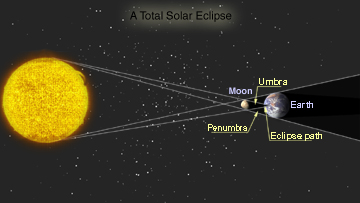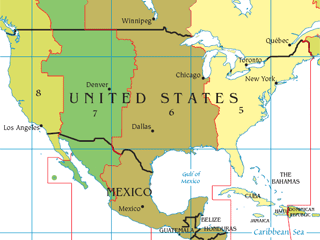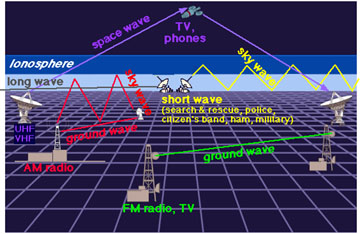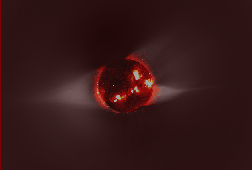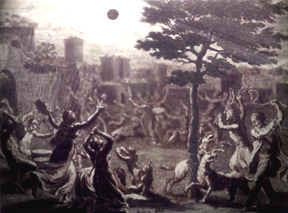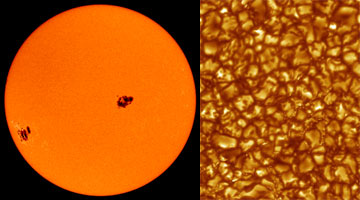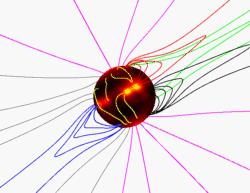Click on image for full size
Windows to the Universe original image
Solar Eclipse Webcast from Africa - March 29, 2006
On March 29, 2006 a total solar eclipse was visible from parts of Africa. Scientists from the University of Cape Coast in Ghana webcast live video coverage of this event. Windows to the Universe was a mirror site for the webcast. Although the live webcast is over now, you can watch a replay of the eclipse by clicking on the link below.
| Click here to watch a replay of the eclipse webcast. The eclipse peak can be found approximately 2 hours and 6 minutes into the stream. |
The middle of the eclipse occurred around 9:10 Universal Time (4:10 AM Eastern time, 2:10 AM Mountain time, or 1:10 AM Pacific time in the United States) on March 29, 2006.
The video will also highlight science being done at various locations throughout Africa. This may include the African LASER Centre, LAMNET (Lasers, Atomic, and Molecular Sciences Network), and the Southern African Large Telescope (SALT). SALT is the largest single optical telescope in the southern hemisphere. SALT has a mirror array 10 meters (33 feet) across that is made up of 91 identical hexagonal mirror segments.
Other astronomy programs in Africa include H.E.S.S. and S.K.A. The High Energy Stereoscopic System (H.E.S.S.) in Namibia detects faint flashes of light in the atmosphere caused by gamma rays. South Africa is one of four countries bidding to host the Square Kilometer Array (S.K.A.), an array of radio telescope dishes that will have a combined surface area of one square kilometer.


